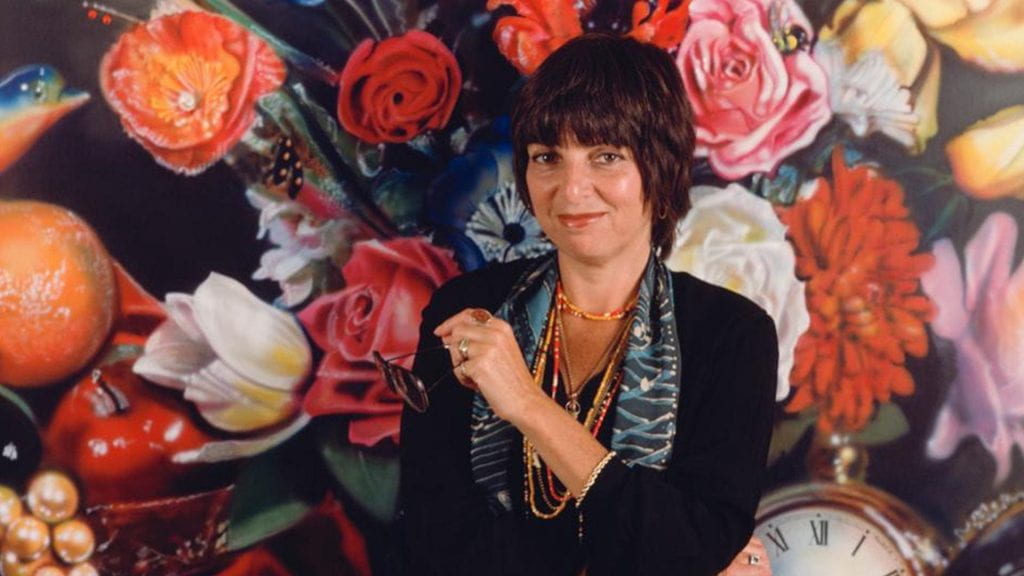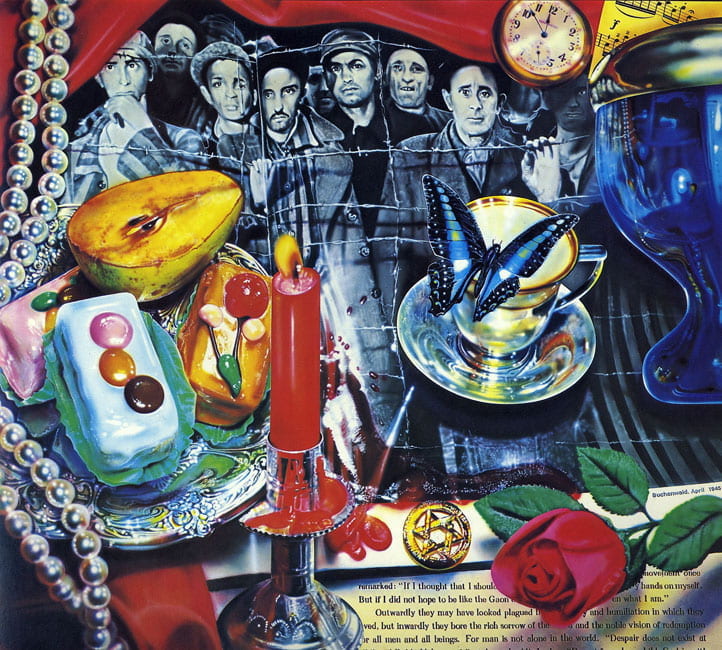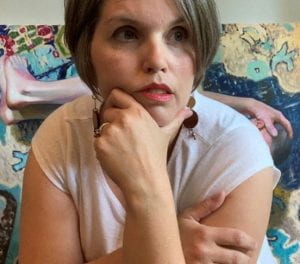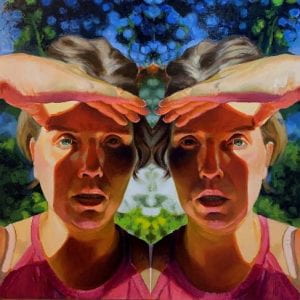
Guest post by Ellen Starr Lyon.
I am chagrined that before now, Audrey Flack has not been on my radar. I am aware of those who worked in her circles, the other realists like Robert Estes and Philip Pearlstein and the abstract expressionists: Pollock, Kline, Mitchell, and Frankenthaler. The film Queen of Hearts outlines a story that I have heard many times told by realist/figurative/academic artists who were disappointed in their education at the hands of abstract expressionists. By school choice and being a later generation, I benefited from an art education (IU!) that included a variety of foundation classes, drawing from live models and anatomy drawing in addition to other media. There were failings of course, but I enjoyed the freedom to follow my interests while also trying styles and media I would not have otherwise experimented with. No experience is wasted; these experiences come together to create each of us as individuals. Flack exemplifies the successful artist’s path of learning, exposure, absorption, experimentation, and reinvention.
I did not see it initially, but after hearing her talk about her beginnings in abstraction and her love of those artists, I understood her use of abstract processes when constructing her own compositions. She uses her early love of abstraction to build photorealist paintings. The documentary shows her to be a storyteller and illustrates her ease of moving from seemingly disparate modes and mediums of expression. How inspiring! Even more inspiring to me, she seems not to judge herself or ask permission; she flows from one to another — eschewing others’ doubts about her choices and use of technology.

The use of photo reference is still a hot topic amongst realist painters. It can be seen by some as a cheat, as lazy or a sign that the artist cannot draw. I believe that many would only use live models if possible; the information gotten that way is beyond anything a camera can give you. But artists live in reality, and reality makes demands. Her use of photography is expediency, a means to an end. It is not a moral issue but a decision to ensure her art practice continues. In this, separated by decades, we are of a mind. My decision to start using photo reference for my figurative work mirrors hers. I am a full-time working mother, and my time is at a premium, so my working hours are predominately at night. These factors preclude the hiring and using of live models. Like many other artists that go this route, I have drawn the figure from life for many, many years. This experience helps me to translate a photograph to meet my needs. Flack mentions in Queen of Hearts losing friends over her use of photography and yet she continues to use what serves her. I am impressed by that.
What I found so interesting and yet so common is Flack’s experience as a woman and mother. Early in the film she touches on the fact that she is often the only woman in classes, groups, etc. She seems to take it in stride and hold her own. To me, this shows the force of her personality. It is once she becomes a mother that the story hits a note that all mothers hear, despite their career choice. Though Flack had her children in the ’60s, the same roadblocks remain. The pandemic has made this even more clear. When children are at home with no in-person classes to allow for work, who stays home? Whose career is threatened? Being a mother is tough no matter what but combined with a nontraditional career, a career that favors men and judges mothers, it is even harder.
Being active on social media has given me access to conversations amongst artists across the globe. It has been my practice to surround myself with other artists and specifically artist-mothers. This past year I have seen this practice expand over platforms like Instagram. There is huge growth in accounts and podcasts dedicated to artist-mothers. This tells me I am not alone and also that not much has changed since Audrey Flack had her children. The answer seems to be a supportive spouse/family, wealth, or waiting. My path was a mix of all three. I have a spouse who takes on more than his share of household duties so that I can paint; I have continued to hold a full-time day job to support my family; and I painted and exhibited sporadically until my children were older. I now paint daily and have a heavy exhibition schedule but feel the anxiety of “catching up” to the others that were not derailed in the same way. It can be done but it takes compromise, community, and a decision to make it work. Queen of Hearts proves it.
On March 11 at 7 pm, join IU Cinema for a virtual introduction and screening of Queen of Hearts: Audrey Flack, followed by an interactive Q&A with artist Audrey Flack and director Deborah Shaffer. This special virtual event is part of the Art and a Movie series and is presented in partnership with the Eskenazi Museum of Art.
You can also listen to an exclusive new interview with Deborah Shaffer on A Place for Film: The IU Cinema Podcast.
Ellen Starr Lyon is a figurative painter focusing on modern portraiture that revolves around feminism, motherhood, and coming of age. Her painting style incorporates a colorful palette and multiple thin, luminous layers with a nod to realism but also the search for something more. Lyon has shown at Manifest Gallery in Cincinnati, OH; Abend Gallery in Denver, CO; WMOCA in Wausau, WI; and Woman Made Gallery and 33 Contemporary in Chicago, IL. She has a BFA in Painting and a BA in Art History from Indiana University. You can check out her work on her website.

